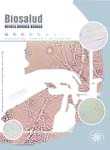Authors
Abstract
Background: some general factors can influence when determining acylcarnitines through tandem mass spectrometry. Objective: to study the effect of adding the internal standard to blood samples before the preparation of filter paper cards compared with the addition of internal standard after having the filter paper cards prepared for determining acylcarnitines in blood for tandem mass spectrometry. Methodology: two groups of blood samples were prepared: group one without adding internal standard before the preparation of filter paper cards, and group two adding internal standard prior to the preparation of filter paper cards. Subsequently the acylcarnitines profile was measured using tandem mass spectrometry. Results: the recovery of acylcarnitines during extraction for the samples which were not added the internal standard before the preparation of the filter paper cards was 48% while for the samples that were added the internal standard the recovery percentage was 96% which shows a significant difference between the two groups. Conclusion: the ideal extraction process showing the highest acylcarnitines recovery level happens by adding the internal standard to the sample prior to the preparation of filter paper cards. However, for diagnostic purposes, filter paper cards containing samples without internal standard are normally received for the acylcarnitines analysis and, therefore, the method used to add the internal standard after preparing the samples on filter paper without internal standard is appropriate for determining acylcarnitines in blood. Abbreviations: ESI-MS/MS, Electrospray and tandem mass spectrometry.
References
Osorio JH, Pourfarzam M. Determination of normal acylcarnitine levels in a healthy pediatric population as a diagnostic tool in inherited errors of mitochondrial fatty acid beta-oxidation. An Pediatr (Barc) 2007;67(6):548-52.
Millington DS, Kodo N, Norwood DL, Roe CR. Tandem Mass Spectrometry: A new method for acylcarnitine profiling with potential for neonatal screening for inborn errors of metabolism. J Inher Metab Dis 1990;13:321-4.
Van Hove JL, Zhang W, Kahler SG, Roe CR, Chen YT, Terada N, et al. Medium chain acyl-CoA dehydrogenase (MCAD) deficiency: diagnosis by acylcarnitine analysis in blood. Am J Hum Gen 1993;52:958-66.
Nada MA, Chace DH, Sprecher H, Roe CR. Investigation of beta-oxidation intermediates in normal and MCAD-deficient human fibroblasts using tandem mass spectrometry. Biochem Mol Med 1995;54:59-66.
Osorio JH, Pourfarzam M. Early diagnosis of neurometabolic diseases by tandem mass spectrometry. Acylcarnitine profile from cord blood. Rev Neurol 2004;38(1):11-6.
Stevens RD, Hillman SL, Worthy S, Sanders D, Millington DS. Assay for free and total carnitine in human plasma using tandem mass spectrometry. Clin Chem 2000;46(5):727-9.
Kodo N, Millington DS, Norwood DL, Roe CR. Quantitative assay of free and total carnitine using tandem mass spectrometry. Clin Chim Acta 1990;186(3):383-90.
Osorio JH, Pourfarzam M. Diagnostic mistake of neurometabolic mental retardation confirmed by mass sequential spectrometry. Rev Neurol 2000; 30(8): 728-730.
An M, Dai J, Wang Q, Tong Y, Ji J. Efficient and clean charge derivatization of peptides for analysis by mass spectrometry. Rapid Commun Mass Spectrom. 2010;24(13):1869-74.
Jensen OM, Podtelejnikov A, Mann M. Delayed extraction improves specificity in database searches by matrix-assisted laser desorption/ionization peptide maps. Rap. Commun. Mass Spectr 1996;101:371-78.
Holub M, Tuschl K, Ratschmann R, Strnadová KA, Mühl A, Heinze G, et al. Influence of hematocrit and localisation of punch in dried blood spots on levels of amino acids and acylcarnitines measured by tandem mass spectrometry. Clin Chim Acta 2006;373:27-31.
Sewell AC. Methods of carnitine analysis. In: Seim H, Löster H, editors. Carnitine-Pathobiochemical Basics and Clinical Applications. Bochum: Ponte Press; 1996. p. 73-84.
Osorio JH, Pourfarzam M. Hydrolysis of acylcarnitines during measurement in blood and plasma by tandem mass spectrometry. Acta Bioquim Clin Latinoam 2010;44(2):15-20.

 PDF
PDF
 FLIP
FLIP














